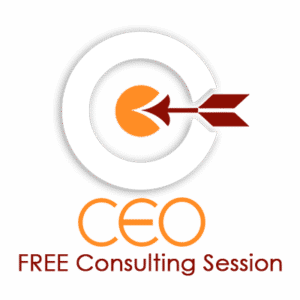
Summary: Is your work style keeping up with the times, or is it becoming obsolete? Let’s explore the dynamics of work styles today and share insights on staying relevant.
Dear Dr. Sylvia,
My boss is not that old. However, he is an old “fuddy-duddy” (now there is an antiquated expression) regarding how to lead his company.
The main argument is the shift from office-based work to remote and flexible arrangements.
He always wants us in the office five days a week. And he loves it when we stay into the early hours of the evening. Those who come in early and stay late are his favorites.
He claims he is adaptable; however, there is a big “that’s not true” from staff.
How do we tell him his thinking is obsolete?
He is intelligent, creative, and generally a good guy, yet he needs some coaching about staying current in the face of change.
Suggestions?
Signed,
Impatient
Dear Impatient,
There are many leaders (and employees, I must add) who cling to outdated work practices.
You can hear the yearning in their voices for “the good old days.”
It’s a myth. Full stop!
We always give up something when there is a new way. And we continually get something when there is a new way.
What did we win, and what did we lose when the telephone was invented?
For example, we gave up the mystery of long wait times for information when the telephone arrived. Yes, there were some positives in the mystery of those quieter days. We had more time to adapt and adjust.
What did we get when the telephone joined the planet? A whole new view of what goes on in our world faster than ever.
Which would you choose?
Here is a way to start the conversation with your boss to help him out of the “fuddy-duddy” world.
Firstly, I, for example, did not grow up with a cell phone as a toy to keep me quiet as a kid. I watched television and used that old-fashioned device with a cord attached to the phone.
I still love phone discussions, so I guess I fall into the “fuddy-duddy realm with your boss.
If you never heard the expression, it means old-fashioned, very cautious, or fussy and is of American origin.
Although I must admit, I now love texting for its brevity.
Here is an idea on how to start a conversation about becoming obsolete. Did you see the video of younger folks attempting to dial a rotary phone? It’s worth a laugh, so here it is.
Show it to your boss.
I call this a “pattern interrupt.” Something not expected that can be a fun and or different way to enter the discussion. Then, when the chuckles die, take some time to discuss what is relevant and what is obsolete.
The underlying issues may be resistance to technology, rigid structures for the workday, and fear of embracing new technologies.
What is even under the above issues is often fear of losing control!
The traditional 9-5 era is remembered.
There were rigid hours and hierarchical reporting structures in the past, as well as a belief that work happened only within physical office space.
In the bygone era of 9-to-5 workplaces, the bustling cityscape was characterized by towering office buildings, each a hive of activity and traditional work hours.
As the sun rose, a sea of well-dressed professionals streamed into these monolithic structures, carrying briefcases and coffee cups, ready to embark on a day of structured routines.
However, for the executives, the work could continue on the golf course or at a 3-martini lunch. Watch an episode of “Mad Men” to get that perspective.
I still see many leaders who would much rather have a 9-5 day or an 8-6 day where employees are in view most of the time.
The rise of remote work.
Change is never easy; think about the upset caused by COVID. That was a time when there was an emergency requirement for flexible schedules.
Along with the pandemic worry, there was also the freedom and the benefit of flexibility that remote work introduced.
I believe that most people do not want to go back to the older model.
Think about the technological advancements, globalization, and changing attitudes toward work-life balance. Remote work introduces unexpected freedom and flexibility, breaking geographical barriers and enabling a more diverse and inclusive workforce.
Many newer technologies increase efficiency, employee satisfaction, and overall productivity.
Think about life before the days when you could order anything you wanted on Amazon. Or when there was no Zoom for meetings.
Those who cling to outdated work practices cause much disharmony, and less work gets done as the complaining increases.
They talk about the “good old days.” Were they?
Remote work is more than a trend—it’s a dynamic force that continues to shape the future. It offers a canvas upon which individuals and organizations can paint their narratives of success, flexibility, and fulfillment.
Flexible Work Arrangements are on the rise.
Flexible work arrangements include flextime and compressed workweeks. These alternatives to the traditional 9-to-5 structure empower employees to balance their personal and professional lives better.
I worked with a sales team that wanted change. Interestingly, while the women in the group were able to express their frustration, needing personal time for doctor appointments for their children or being able to leave work and go to an after-school soccer game, it was the men who were the most upset.
As one man said, “Did anyone ever think I would be proud and happy to see my son take his first step or have even a tiny role in a kindergarten play? I feel like I missed so much. Sometimes, I wish I could be a stay-at-home father. “However, it takes me and my wife to make the finances work in this modern world.
That company was an early adapter of flex time. And once there was more freedom with time, profits went up and continued to go up.
The Gig Economy
There is a constant rise of freelancers and independent contractors. This trend includes the autonomy it provides workers and the adaptability it offers businesses.
Consider how movies are made. You join for a specific period, and when finished, you go to another project elsewhere.
This is for those who love new adventures and must be their boss.
For example, you can live almost anywhere and work from there. This appeals to those who value and can quickly harness the energy of change.
Continuous learning at work
Embracing a growth mindset can positively impact one’s work style. The companies that stay updated with industry trends offer time to attend workshops, and leverage online learning platforms are the ones that win.
Balance Tradition and Innovation.
Now, not all that is from the past needs to be discarded.
No babies are to be thrown out with the bathwater.
Not all traditional work practices are obsolete, and there is value in specific established approaches.
The real work is to balance maintaining core principles and integrating innovative solutions.
This is a time to reflect on your work practices and embrace change when necessary.
Companies across various industries are redefining traditional work structures and embracing remote and flexible work policies to promote employee satisfaction, work-life balance, and productivity.
Conclusion: the key milestones in the evolution of work styles emphasize the need for adaptability in the face of ongoing changes. Embrace the opportunities the evolving landscape presents, whether through remote work, flexible arrangements, or participation in the gig economy.
Companies across various industries are redefining traditional work structures and embracing remote and flexible work policies to promote employee satisfaction, work-life balance, and productivity.
This is an optimistic time to look at the future of work and its exciting possibilities for individuals and organizations.
To your success,
Sylvia Lafair
PS. A new way to look at the stress of change can be found in my best-selling book “Invisible Stress (It’s NOT What YOU Think!).


